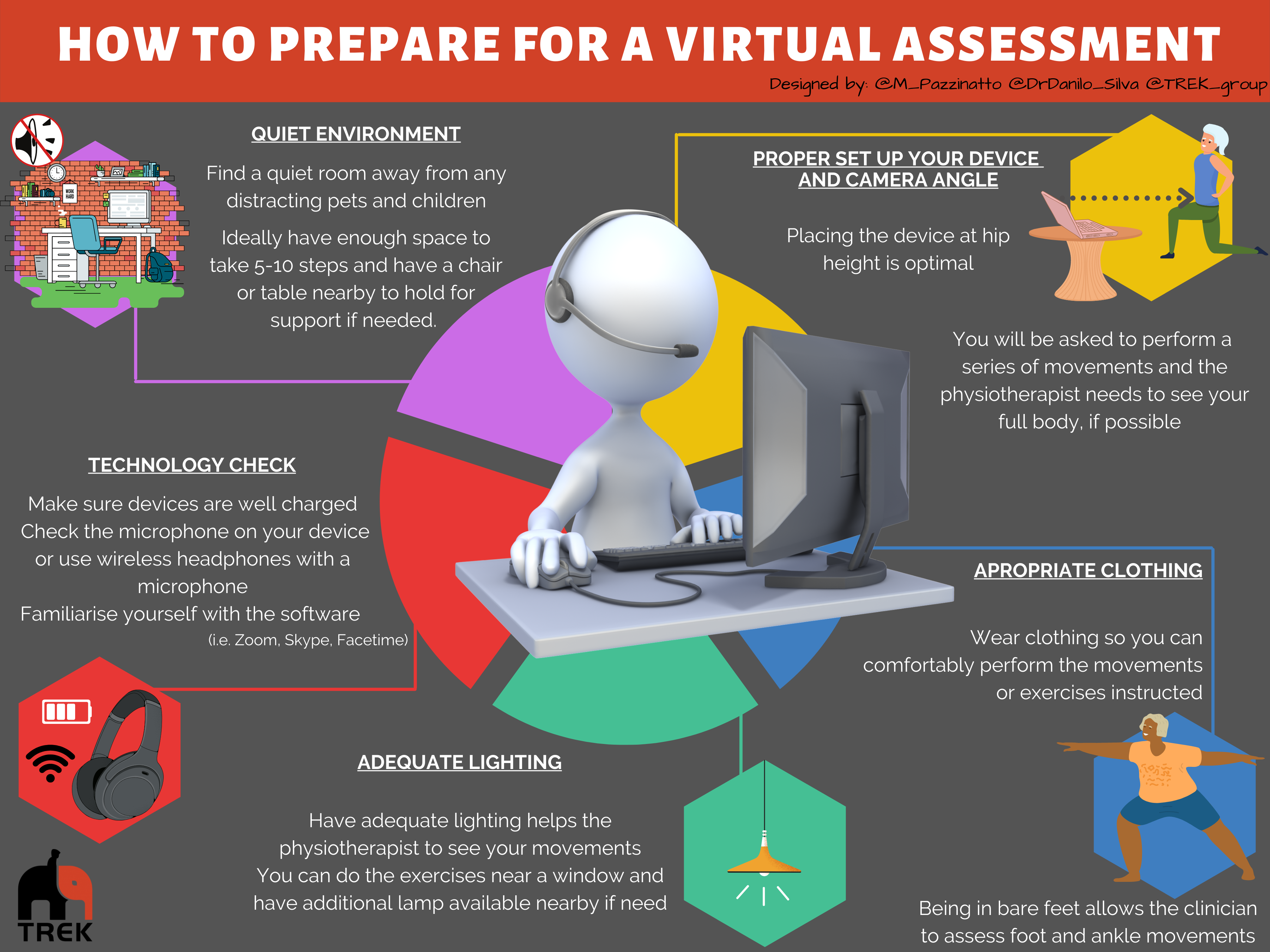Check out this free online telehealth toolkit to find out more….
by Allison M Ezzat PT PhD, Danilo de Oliveira Silva PT, PhD
Musculoskeletal pain conditions are a global leading cause of pain, disability, and result in increased all-cause mortality.1 Yet, evidence-based physiotherapy management of musculoskeletal conditions is not universally accessible, especially for people living in rural and remote regions. Reduced access to in-person physiotherapy during the COVID-19 pandemic, highlighted the importance of alternative delivery models to facilitate patients’ timely access to care. Telehealth, defined as the remote patient-clinician interaction via synchronous (e.g. telephone, teleconference, video call) means,2 exploded in popularity during the pandemic with many physiotherapists implementing it for the first time. There is an emerging body of research supporting the efficacy of telehealth as being comparable to in-person care in the management of many musculoskeletal conditions, including osteoarthritis and low back pain.3 In many countries, the pandemic provided impetus for improved funding for physiotherapy via telehealth. This has created an opportunity for the profession to improve patient access to physiotherapy by leveraging the benefits of telehealth.

However, our previous work with Australian and Canadian physiotherapists has found that many lack knowledge, skills, and confidence when providing care via telehealth. In a series of cross-sectional surveys of Canadian physiotherapists, 84% planned to continue offering telehealth beyond the pandemic. However, 60% were less confident in managing patients compared to in-person care.4 Similarly, investigating the views of allied health professionals in Australia, only 21% stated they had sufficient telehealth training.5 If physiotherapists want to be able to confidently provide high-quality care for musculoskeletal conditions, they need accessible training and resources to support them. Toolkits have been found to be the most preferred methods for physiotherapists to receive further training.6 Responding to this urgent need, we developed an online, evidence-based telehealth toolkit for physiotherapists managing musculoskeletal conditions.
This project used co-design methods,7 integrating feedback from physiotherapist clinicians and patients with musculoskeletal pain conditions, to ensure the toolkit is relevant to facilitate widespread adoption. We conducted 4 focus groups with 13 physiotherapists, 7 patients, and 2 clinic administrators to ask them to provide their perspectives on the content, format, and usability of the toolkit.
Here are some of the resources included in the Musculoskeletal Telehealth Toolkit:
- An overview of the evidence surrounding telehealth in musculoskeletal physiotherapy
- Short video clips demonstrating assessment techniques via telehealth
- Tips and resources for implementing telehealth in a clinical setting
- Real patient experiences with telehealth
- Patient resources (infographics, videoclips) on how to prepare for telehealth, technology tips, and frequently asked questions about telehealth
We need your help!
We are currently evaluating the ability of the toolkit to improve physiotherapists’ knowledge, skills, and confidence to deliver care via telehealth using two brief surveys. We ask that you first complete a short survey to receive the direct link to the toolkit. Next, explore the toolkit in as much depth as you wish over the next few months. Importantly, watch for a second short survey that will be emailed to you 3 months later. This will allow us to fully evaluate the aims of the toolkit.
Thank you for considering being involved in this exciting project to improve the quality of physiotherapy care delivered by telehealth. By showing that we can successfully evaluate this toolkit, it will allow us to continue to create more free online resources for the profession. We sincerely hope you enjoy the resource and find it useful!
Access the survey and toolkit.
You can also email any suggestions or feedback about the Musculoskeletal Telehealth Toolkit to Dr Allison Ezzat directly at a.ezzat@latrobe.edu.au
References:
- Briggs, AM et al. Global threat to healthy aging: a report for the 2015 World Health Organization World Report on Ageing and Health. Gerontologist 2016;56(s2): s243-s255.
- Dorsey E, EJ T. State of telehealth. N Engl J Med. 2016;375:154-161.
- Cottrell M, Russell T. Telehealth for musculoskeletal physiotherapy. Musculosklet Sci Pr. 2020;48:102193.
- Ezzat AM, Esculier JF, Lord Ferguson S, Napier C, Wong ST. Canadian Physiotherapists integrate virtual care during the COVID-19 pandemic. Physiother Can. 2022 In press.
- Malliaras P, Merolli M, Williams CM, Caneiro JP, Haines T, Barton CJ. “It’s not hands-on therapy, so it’s very limited: Telehealth use and views among allied health clniicans during the coronavirus pandemic. Musculoskeletal sci prac 2021;52:102340.
- Barton CJ, Ezzat AM, Bell E, Rathleff MS, Kemp J, Crossley KM. Knowledge, confidence and learning needs of physiotherapists treating persistent knee pain in Australia and Canada: A mixed-methods study. Physiotherapy Theory Pract 2021;online April 19; 1-13.
- Slattery P, Saeri AK, Bragge P. Research co-design in health: a rapid overview of reviews. Health Res Policy Sys. 2020;18, 17.. doi: 10.1186/s12961-020-0528-